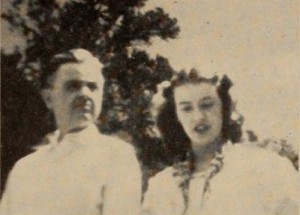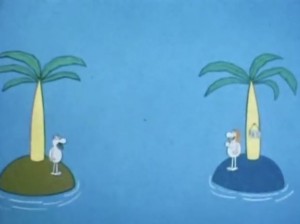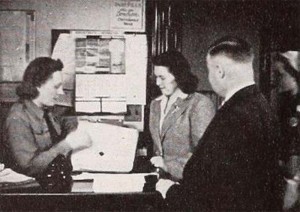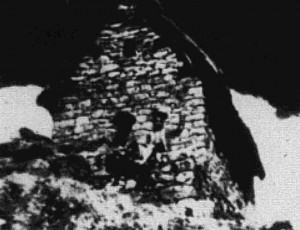
"Three Wishes is a fantasy, done by Earl L. Cochran with a delightful touch of originality. The story is told in footage that is relatively brief, yet clever editing and planning make it thoroughly complete. Here we have the familiar legend of the fortunate mortal who is given exactly three wishes by a supernatural power — and what happens when these three wishes are granted. The feat that Mr. Cochran accomplished was to tell such a story humorously and effectively, but without resort to complicated camera trickery. Except for one double exposed scene of the inevitable jinni which is evoked by rubbing a silver teapot (and this is a very good shot, too!) the film tells its story with straight cinematography. While the interior and exterior technique of scene recording, including a shot of an auction, was completely adequate, the outstanding feature of this film is its story telling quality, accomplished by careful cutting. An excellent performance was given by the single lead character of the photoplay, while the brief appearance of the jinni was very expertly handled." Movie Makers, Dec. 1940, 600.

"Basing his story line on an incident which is said actually to have occurred in Sweden, Harry W. Atwood has proved once again in Through the Valley his imaginative understanding of what makes a true motion picture. For here is camera work of the first order, expressed in meaningful angles and building through a stirring chase sequence to a point of very real dramatic tension. If anything, the film's climax has been staged with a shade too much of melodrama, while a concluding quotation from the Scriptures left these reviewers regretfully more puzzled than uplifted." Movie Makers, Dec. 1949, 471.
"In Thyroidectomy, Henry M. Lester, ACL, has combined all the essentials of the perfect medical film. The delicate color gradations of tissues that mean much to the surgeon are clearly evident, due to excellent exposure, lighting and suitable film stock. Thorough presentation of the operating technique is given by means of suitable telephoto lenses and properly placing the camera in relation to the surgical field. An unusual feature of this particular operation is the large number of instruments which necessarily must remain in the field most of the time, creating a difficult problem for the photographer in that the many shining surfaces tend to produce undesirable reflections. However, Mr. Lester has solved this problem to perfection. The film is a result of the combination of highly specialized skill, equipment designed for the purpose and an exact knowledge of the requirements for the perfect surgical film." Movie Makers, Dec. 1934, 534.

Pequeña historia de náufragos donde una mujer es llevada por sus más ardorosos sentimientos, comprobando los límites del egoísmo del hombre.
Short story about castaways in which a woman is carried away by her most burning feelings, proving the limits of man's selfishness.
"Interior footage of a woman playing the piano. A few shots also feature a young child sat on her knee whilst she plays. Includes close up shots of the woman's arms and hands, as she presses the piano keys" (NWFA Online Database).

"In the film, a young woman receives a letter about her brother's arrival in the army, which prompts her to ask: "What can I do to help in this war?" The film's answer is to give blood, and it proceeds to show the process of the young woman and her father giving blood at the local Red Cross clinic. The entire procedure is shown, including medical examinations and long sequences in the clinic that explain all the parts of the process. Eventually, this vivid color film shows the actor actually giving blood. To provide drama the film shows an alternation between shots of the woman at church and her injured brother resting in a hospital after Dieppe; it soon reveals that he is being treated with blood transfusions, and we can see that he will soon recover. The film ends with a sequence of shots showing the solider walking down a snowy Ottawa street with a cane, returning home. When he sees from a sign in the window that the woman there gave blood, he is touched by her lifesaving contribution. This silent film is thirty minutes long and blends elements of fictional or dramatized scenes with process sequences at the Ottawa Blood Donor Service. Shot in 16mm color film, it is both a vivid and professional-looking production; indeed, it exemplifies both elements of the practical amateur genre (creative engagement with practical issues) and the wartime necessity of the moment" (Tepperman 93).

"Tierra de los Incas by Dorothy Ruth Orr, M.D. and Othel G. Goff, APSA, both PSA members of San Francisco, Calif. Dottie and Ot have made a beautiful film on this remote South American civilization of centuries ago. This 16-minute 16mm film was awarded a Ten Best Medal and the Travel Film Award" PSA Journal, Nov. 1971, 42.
Total Pages: 299